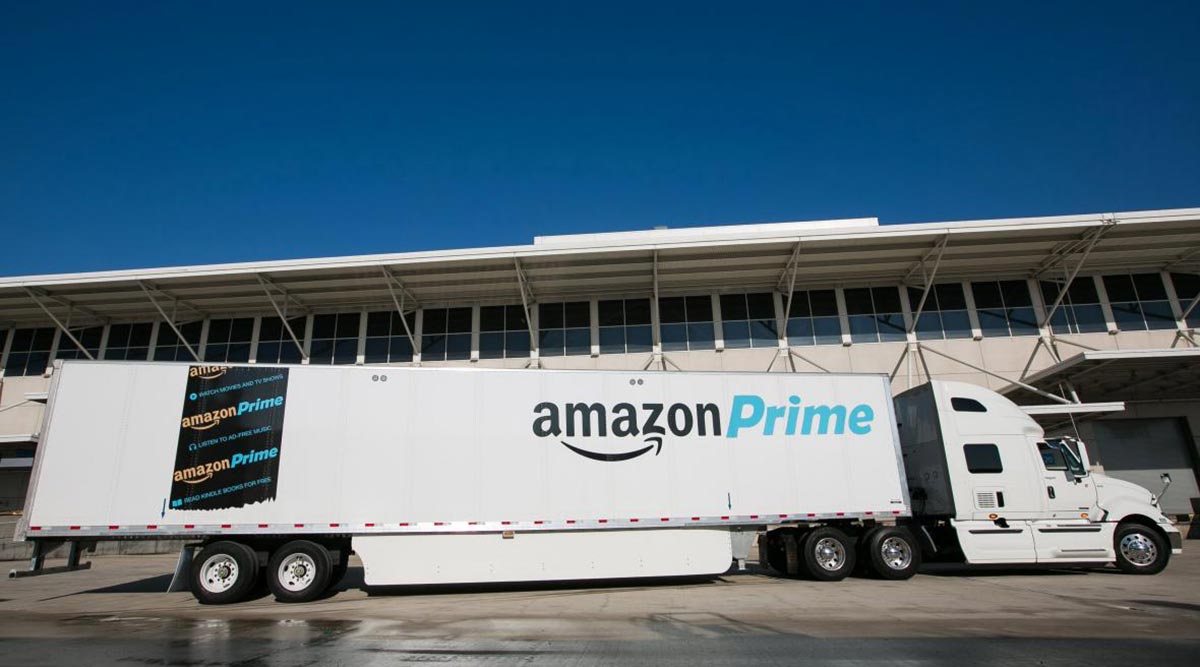Analysis: FedEx Earnings and the Amazonian Elephant

Good news for FedEx Corp. isn't always good news for the U.S. economy. As the world's largest cargo airline and a major provider of parcel delivery services, FedEx's business touches many industries, from consumer goods to pharmaceuticals, making its results a proxy of sorts for how the broader economy is doing.
The $43 billion company's earnings released late March 16 show that it still is that same economic bellwether — just not in the way you might think. FedEx lifted its earnings forecast for the fiscal year ending this May to $10.70 to $10.90 a share, up from $10.40 to $10.90. That, along with a third-quarter beat, helped put the stock on track for its biggest gain since 2002 on March 17.
At the same time, though, FedEx lowered its projections for global and U.S. GDP growth. It now sees the economy expanding 2.2% domestically and 2.5% globally in 2016; compare that with forecasts of 3.1% for each last March.
That echoed the Federal Reserve's less enthusiastic take on global growth this week as officials held off on raising borrowing costs and lowered expectations for how much interest rates will increase this year.
What gives? The answer is cost cuts and e-commerce. The industrial companies that will thrive in this period of low growth are those that focus on execution and take the necessary steps to improve profitability.
Companies from Honeywell to General Electric have used cost cuts to keep earnings growth chugging along. FedEx is part of that club, crediting a $1.7 billion cost-cutting program that is nearing completion for part of the rosier profit outlook. As for the latter, e-commerce shipments have pushed volume growth above what would be indicated by the economic backdrop, helping to deliver record revenue.
Which brings us to the elephant in the room: Amazon.
Despite the excellent results, FedEx management still had to answer questions about the e-commerce giant and the potential for it to encroach on the package shipper's territory as Amazon makes plans to build out its own delivery capabilities.
CEO Fred Smith said reports about the threat of industry disruption were "fantastical" and that the benefits of route density mean his company, UPS Inc. and the U.S. Postal Service — not Amazon — will be the primary deliverers of e-commerce shipments for the ``foreseeable future."
And he's right: The near-term threat of an Amazon delivery network is pretty negligible for the traditional parcel carriers. It will cost Amazon a lot of money and time to turn its fulfillment and sorting centers and intercity delivery operations into a full-fledged logistics network.
The question is more about the unforeseeable future. Amazon doesn't have to re-create FedEx's whole network to be a potential threat to FedEx. In fact, the company probably has no interest in being FedEx. But that doesn't make its delivery aspirations any less worthy of attention.
Amazon has been giving every indication that it is serious about investing in logistics. Earlier this month, the $263 billion company said it would lease 20 Boeing 767 freighters from Air Transport Services Group in an effort to start building out an air delivery network.
Its Chinese subsidiary recently received a license to negotiate directly with ocean freight carriers for both its own cargo and that of third parties. The initial point of these investments is to help Amazon lower its escalating shipping costs, reduce the risk of service disruptions during peak periods and increase its offerings for third-party vendors using its site. It is a supplement, not a replacement for UPS and FedEx —but for how long?
Even if FedEx and UPS were to totally lose Amazon's business, it is important to note that the hit to revenue probably would be gradual and certainly not disastrous. But if Amazon can offer cheaper and more efficient shipping services, that's an attractive proposition for many third-party vendors.
A growing number already use Amazon as their de-facto e-commerce site and tap the company's fulfillment services for storing and shipping. At the very least, Amazon's entry into delivery operations could change traditional thinking on pricing, service offerings (Sunday and one-hour deliveries already are options for some Amazon customers) and process (think more automation and the ability to organize logistics with a few taps of a smartphone).
To FedEx and UPS' credit, both have been investing in technology to make the delivery process more efficient and working to improve how they handle the deluge of e-commerce shipments. RBC analysts noted in a report analyzing the potential threat of Amazon earlier this week that UPS ran at least one round of Sunday deliveries during the peak holiday season because "a member of our team received a package from Amazon during a Redskins'' football game — so there's that.
In all seriousness, though, the fact that these companies have had to make changes to their business because of e-commerce makes it seem a little knee-jerk — arrogant, maybe — to dismiss the threat of industry disruption at the hands of a technological interloper as fantastical.




